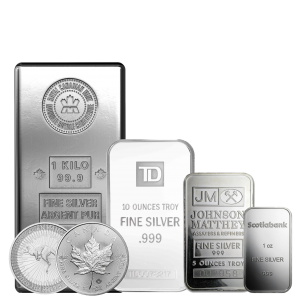

Back
The Role of Gold During Inflation and Recession
November 29, 2024
The Role of Gold During Inflation and Recession
Understanding Gold, Inflation, and Recession
Historically, gold has been a safe-haven asset during the economic crisis. While gold usually maintains its value, money's buying power declines with inflation; thus, it is a more desirable investment.
As prices for goods and services go up, people's ability to buy things decreases. This is called inflation. When prices consistently increase across an entire economy over time, this occurrence is known as inflation.
A recession is precisely what? A recession can be characterized as a widespread decline in economic growth that endures for two consecutive months or a stagnation in growth that persists for six months at the same time. Gross domestic product, income, employment, manufacturing, and retail sales serve as distinct indicators for assessing economic growth.
Economic instability is inversely correlated with perceived inherent value and limited availability of gold. Because gold can protect against inflation and recession, it appeals more in uncertain economic times.
Historical Gold Performance During Economic Downturns
For an extremely extended period, gold has served as a secure haven during periods of economic unpredictability. It has always gone up in value, even when other investments have done badly. As stock markets fell during the 2008 financial crisis, the price of gold rose by almost 25%. Although traditional currencies lost value during the stagflation of the 1970s, the value of gold rose significantly. During recent economic downturns, gold has consistently done better than other asset classes. The COVID-19 pandemic caused the world economy to slow down a lot, which led to unprecedented stimulus measures and an easing of monetary policy. Gold was worth $2038 an ounce at the start of 2020. By August of that year, the price had reached a record high of almost $2689 an ounce. When things are uncertain, investors rush to gold at times like falling prices, unstable economies, and political unrest, which proves its worth.
Which Factors Affect the Price of Gold?
The way investors feel is very important because fear and doubt make people look for safe investment options. As interest rates go down, people become more interested in gold. Gold prices tend to go up when the US dollar falls. The value of gold can be greatly affected by what central banks do with quantitative easing.
Growing your gold holdings can protect you from inflation and market changes during times of economic uncertainty. Consider allocating a part of your assets to gold coins or bars. Gold can be a good long-term investment, but you can get the most out of it if you invest at the right time. We at Instant Gold Refining want to help you use the power of gold to protect your financial future, no matter what the economy is like. Are you ready to protect your assets? Get in touch with Instant Gold Refining right away to safely buy, sell, or refine gold.










